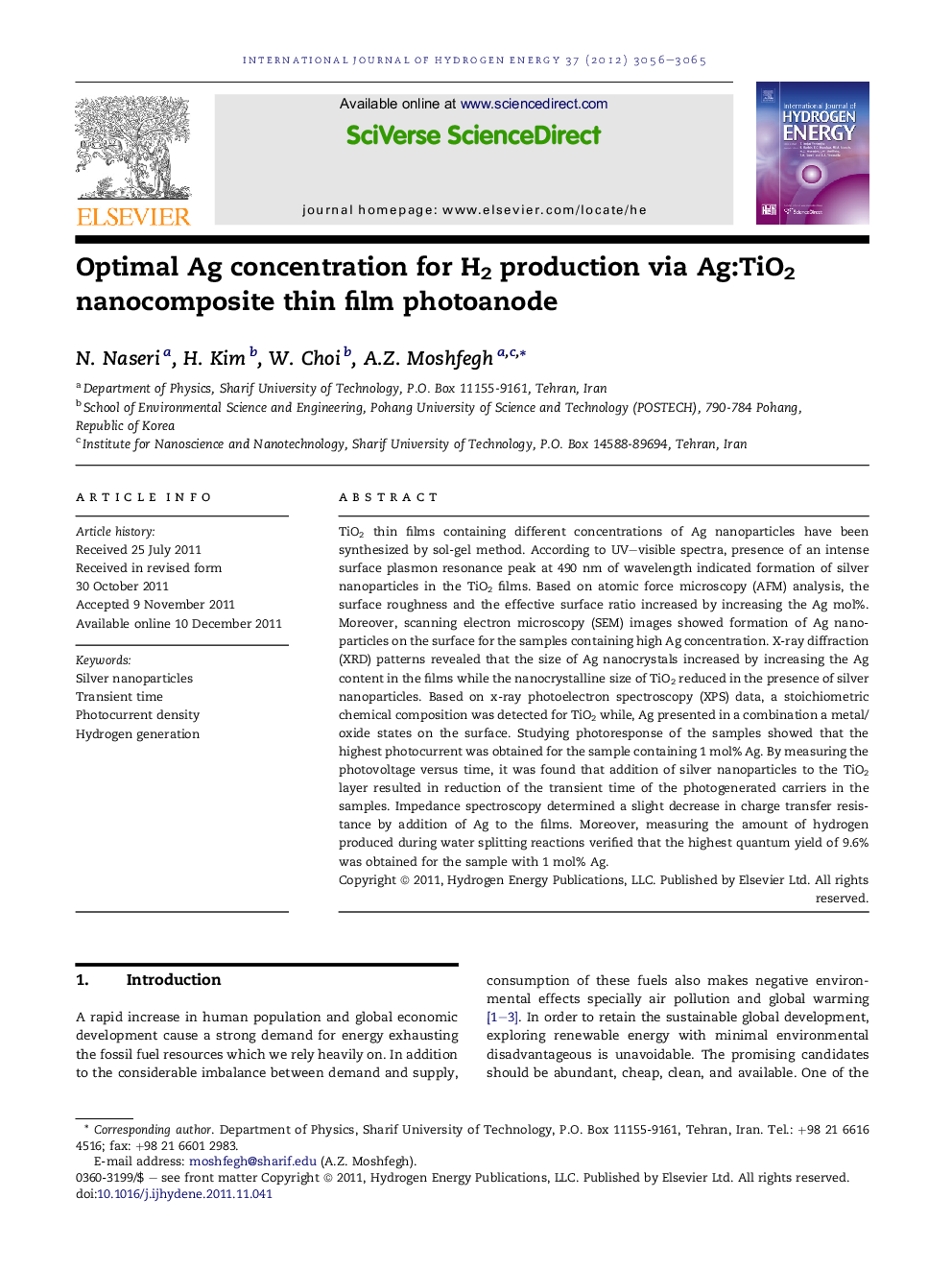| Article ID | Journal | Published Year | Pages | File Type |
|---|---|---|---|---|
| 1282312 | International Journal of Hydrogen Energy | 2012 | 10 Pages |
TiO2 thin films containing different concentrations of Ag nanoparticles have been synthesized by sol-gel method. According to UV–visible spectra, presence of an intense surface plasmon resonance peak at 490 nm of wavelength indicated formation of silver nanoparticles in the TiO2 films. Based on atomic force microscopy (AFM) analysis, the surface roughness and the effective surface ratio increased by increasing the Ag mol%. Moreover, scanning electron microscopy (SEM) images showed formation of Ag nanoparticles on the surface for the samples containing high Ag concentration. X-ray diffraction (XRD) patterns revealed that the size of Ag nanocrystals increased by increasing the Ag content in the films while the nanocrystalline size of TiO2 reduced in the presence of silver nanoparticles. Based on x-ray photoelectron spectroscopy (XPS) data, a stoichiometric chemical composition was detected for TiO2 while, Ag presented in a combination a metal/oxide states on the surface. Studying photoresponse of the samples showed that the highest photocurrent was obtained for the sample containing 1 mol% Ag. By measuring the photovoltage versus time, it was found that addition of silver nanoparticles to the TiO2 layer resulted in reduction of the transient time of the photogenerated carriers in the samples. Impedance spectroscopy determined a slight decrease in charge transfer resistance by addition of Ag to the films. Moreover, measuring the amount of hydrogen produced during water splitting reactions verified that the highest quantum yield of 9.6% was obtained for the sample with 1 mol% Ag.
► Ag:TiO2 nanocomposite thin films synthesized by easy sol-gel method. ► The optimum percentage of Ag was found 1 mol% for the best PEC performance and H2 production. ► Annealing in reducing ambient caused reduction in e-h life time. ► Competitive transfer of electrons to Ag ions and back contact reduced current in high Ag contents. ► Highest obtained efficiency for H2 production was gained about 9.6%.
